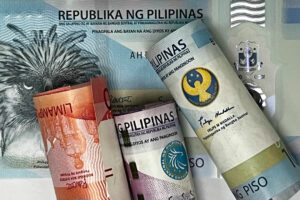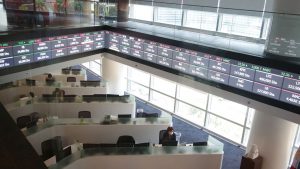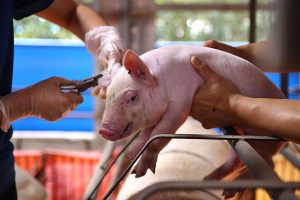There was a small item of news in the Business Section of a broadsheet entitled: “Wanted: ‘sooner than later’ Bangko Sentral rate cuts.” The author states that this will finally bring some relief to consumers and corporates who had been under the weight of the restrictive monetary policy for more than two years now.
Monetary policy is not the instrument to slow down supply-driven inflation. Most central banks have elected to address supply-driven inflation by curving market demand. The correct strategy is to expand market supply fiscally the way the Biden “Inflation Reduction Program” proposes to address the chip scarcity. But this is very long-term and by then we could all be dead. The only short-term response is by raising imports and tariff reduction.
The author noted correctly that one missing piece in the post-COVID Philippine growth story was investment. We are keeping investment at bay by high interest rates. The investment activity has remained predictably at the depressed post-COVID levels while consumption and government spending have been slowly returning to trend and been helped nudged towards the recovery levels by massive government borrowing to support market demand, resulting in inflation.
The continued reluctance of the Bangko Sentral ng Pilipinas (BSP) to lower the benchmark interest rate is due to the reluctance of the United States Federal Reserve Board (Fed) to ease monetary policy, plus the lingering inflationary pressure from the local rice shortage; though clearly, as the BSP governor observes, on the downward trajectory. Jumping the gun on the Fed easing will send foreign portfolio capital fleeing to the US dollar creating pressure on the forex reserve. The forex reserve is growing thanks to borrowing revenues. Furthermore, the Corporate Recovery and Tax Incentives for Enterprises Act (CREATE) 2, passed in 2021, lowered the corporate income tax (CIT) from 32% to 25% and was to boost private investment, but which has been presumably postponed in view of the high domestic interest rate. The Monetary Board left its overnight borrowing rate at a 17-year high of 6.5%.
This is not the first time that the rate breached P58 per dollar. In Oct. 22, 2022 it was, on average, P58.82/US$. The BSP governor hinted at monetary easing of as much as 50 basis points following the Fed easing of monetary policy. The BSP is reluctant to jump the gun on the Fed reluctance for fear of capital flight towards the dollar. We note that the investment rate in 2022 was indeed lower than regional counterpart investment rates although this state of affairs seems permanent. (See the table.)
Note that 2022 was a year after the 2021 tax cut which brought down the corporate income tax rate to 25% from 32%. This tax bonanza should have translated into additional private investment. Casual observation suggests it instead raised the declared dividend rates fueling consumption rather than investment, perhaps due to the high benchmark interest rate.
J.M. Keynes advocated government intervention towards a recovery of market demand which precipitated the quarrel between Keynes and his classical critics in the 1930s when he argued that the shortfall of market demand in a recession does not mend of itself without some help from the government. Indeed, Joseph Schumpeter argued in his 1939 business cycle volume that the Great Depression was due to the unfortunate confluence of short-, medium-, and long-term business cycles, which would unwind by itself. Keynes’ critics believed that supply creates its own demand — that excess supply is a temporary phenomenon and will soon be closed by market arbitrage in the short run; in the long-run; he was wont to observe, “In the long run, we are all dead.”
The Philippines’s monetary policy is structurally limited by institutional commitment to the inflation targeting. The so-called “impossible trilemma” leans on three pillars: the (1) floating exchange rate, (2) an open capital account, resulting in (3) ineffective fiscal policy — the well-known unholy trinity. After the collapse of the Gold Standard and divorce of a fixed gold-dollar exchange rate in the 1970s, central bankers were at a loss for a replacement rule, and price stability offered one way out: central banks were granted legal independence and tasked to safeguard the fixed target inflation. Market volatility could be tamed by keeping the interest rate high and, if inadequate, by allowing the forex reserves to respond.
This is what the BSP governor meant when he stated that the Philippines has enough reserves to withstand additional volatility to below P58 (now standing at P58.45/US dollar). Some economies decided that the traditional fixed exchange rate was too precious for growth to abandon and chose a hybrid, say, an intermediate exchange rate.
There was a need to endow monetary authorities with some independence to preserve price stability. But what is the goal of price stability? Price stability is defended as steps to a “balanced and sustainable growth” which will draw in investment and sustain growth. Most countries followed the lead of New Zealand which defined 2% inflation as its North Star. But 2% inflation as a North Star may be good for high-income economies but may have been suboptimal for lower income countries on a rapid growth pursuit.
When economic growth performance is the criterion, the evidence seemed to favor the fixed exchange rate. Frankel et al. (2019) found that growth performance tends to be negatively related to de facto flexible exchange rate regimes and tends to be positively related to either a de facto fixed exchange rate or “systematic managed floating” (an intermediate exchange rate regime) regimes, which enable “greater price stability… and stable investment and trade…” This is probably why so-called “currency manipulators” (a label that is given by the US Treasury or State Department to an economy characterized by persistent trade surplus and a refusal to allow the currency to appreciate) had better results than currency neutralizers. Vietnam was warned by the US State Department of currency manipulation when it refused to let the Vietnamese Dong appreciate despite an appreciation by rival countries and an emerging trade surplus in 2020. Many other considerations clearly affect the price of exports such as the cost of manufacturing in a country and its relative inflation rates.
The inflation we face today derives from the current rice shortage, which is outside the purview of monetary policy. Will easier money bring about an increased supply of rice in the market? No!
The Philippines farm sector, under the sway of the 1987 Comprehensive Agrarian Reform Law (CARL), is already under a permanent monetary squeeze. CARL prohibits ownership in excess of five hectares which disrupts the traditional loan-collateral nexus — banks would rather pay penalties for non-compliance with the agri-agra law than lend to high-risk small farmer-borrowers, mostly agrarian reform beneficiaries. Banks are obligated to meet prudential rules set by the BSP and would rather pay the associated penalties. The result is that small farms are effectively excluded from the formal financial sector and have to resort to exorbitant informal lending.
An easing of monetary policy will not raise the investment in food production. The only short-term solution is a tariff reduction. Over the long term, we need to abandon the many irrational hurdles imposed by the CARL on the farm sector and ease the way for large private capital.
Raul V. Fabella is a retired professor at the UP School of Economics, a member of the National Academy of Science and Technology, and an honorary professor at the Asian Institute of Management. He gets his dopamine fix from tending flowers with wife Teena, bicycling, and assiduously courting, if with little success, the guitar.






